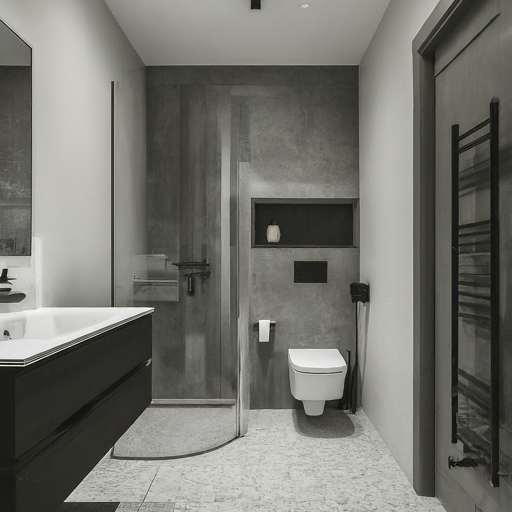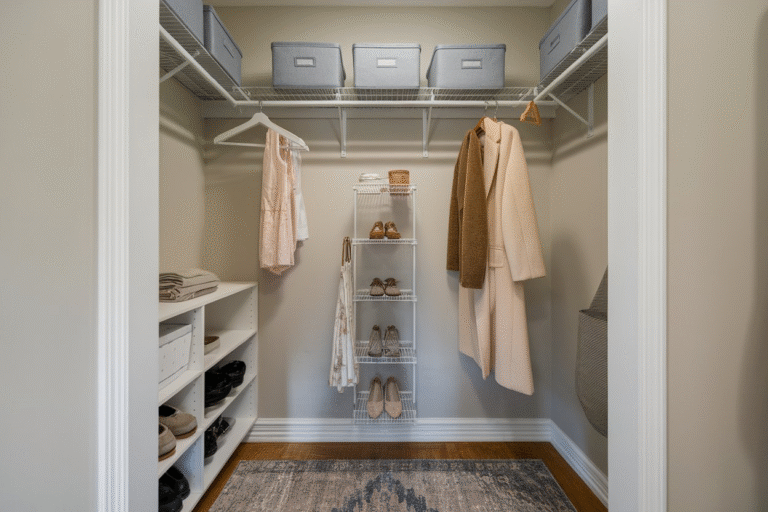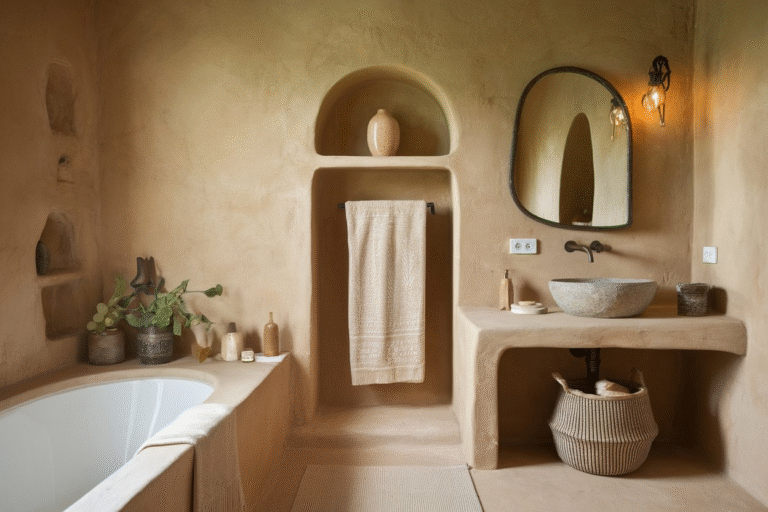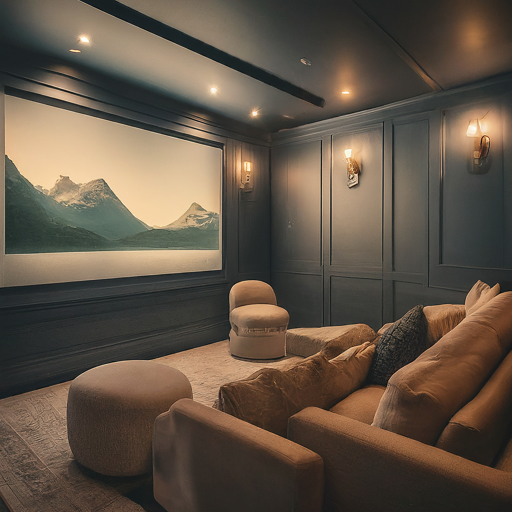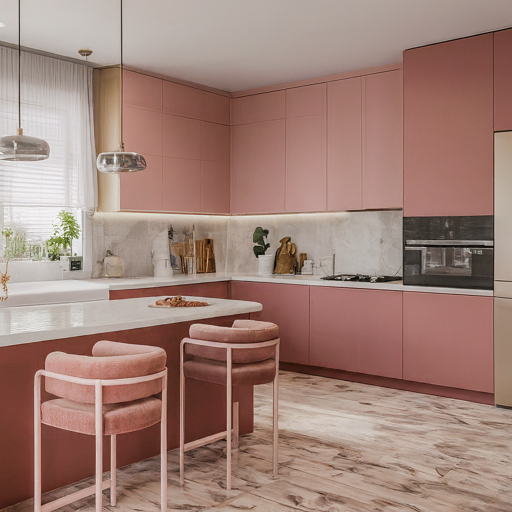22 Kitchen Shelves Instead of Cabinets Ideas
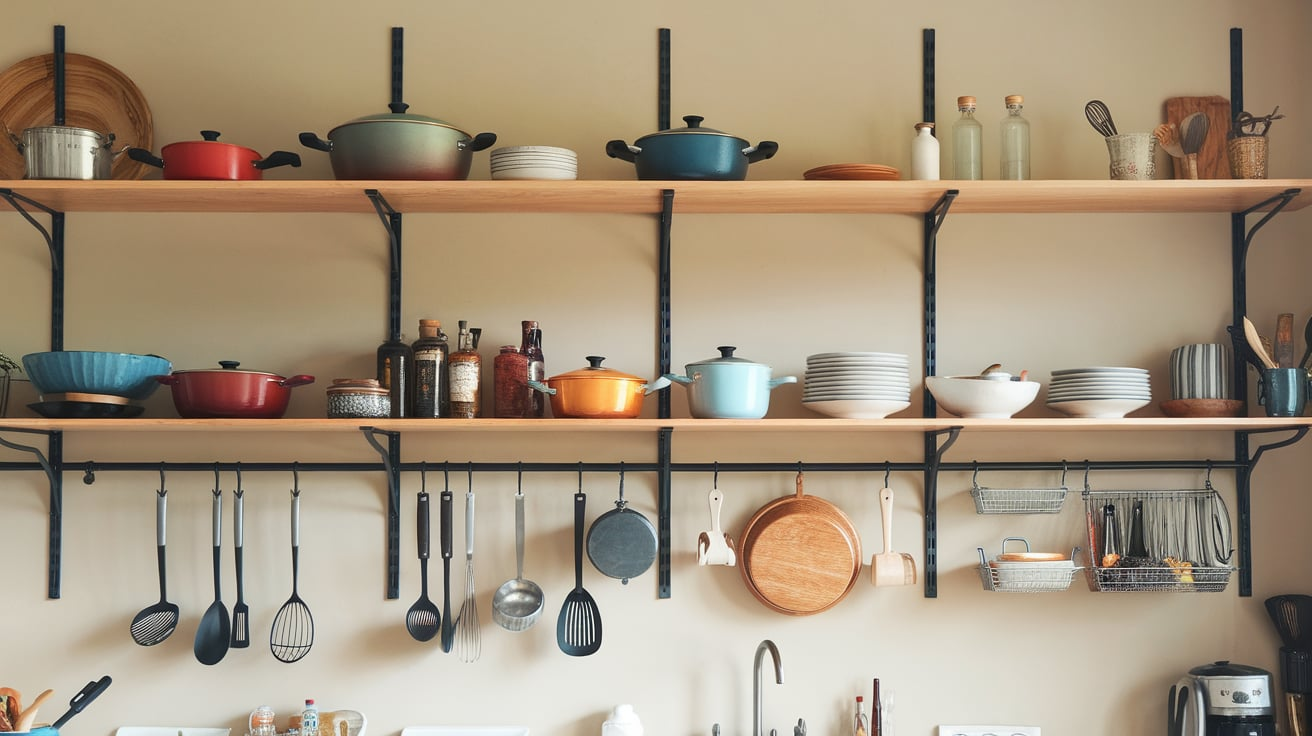
There’s something daring and delightfully freeing about ditching the typical kitchen cabinets and replacing them with open shelves.
Cabinets, while practical, can feel like heavy boxes squatting on your walls, hiding all the beauty behind blank doors. Open shelving is like giving your kitchen a chance to breathe — and to show off your personality.
1. Classic Wood Floating Shelves
Floating shelves are like the jeans of the kitchen — simple, timeless, and they go with everything. Choose reclaimed wood for a rustic vibe or polished oak for a sleeker finish. The beauty lies in their ability to hover without visible brackets, giving your kitchen a clean and open feel.
I once helped a friend install walnut floating shelves, and she ended up styling them with white ceramics and copper mugs — it looked straight out of a magazine.
2. Industrial Pipe Shelves
If your taste leans more toward the edgy and utilitarian, try shelves mounted on industrial pipes. They scream character and add a layer of toughness to your space.
Black pipes combined with natural wood bring in a cozy, loft-like vibe. They’re perfect for storing mason jars, coffee mugs, and cookbooks — think “hipster cafe meets practical storage.”
3. Corner Open Shelves
Corners are often wasted real estate, but with the right shelves, you can turn them into treasure troves of storage. Use stacked triangular or L-shaped wooden shelves that nestle neatly into a corner.
They’re perfect for spices, tea tins, or tiny potted herbs. Bonus: they make your kitchen look architecturally clever.
4. Glass Shelving for an Airy Look
If you’re aiming for a light, modern aesthetic, consider glass shelves. They almost disappear into the wall and are ideal for displaying beautiful dishware, crystal glasses, or minimalist jars.
Be prepared to keep things tidy — glass shelves don’t hide your messes — but when styled right, they’re a showstopper.
5. Metal Grate Shelves for Texture
Shelves made from metal grating or mesh add visual texture and a modern-industrial feel. They’re strong enough to hold heavy items and lend a gritty contrast to smooth stone countertops or tile backsplashes.
I once saw them in a black-and-white kitchen with subway tile — it looked like something from a Scandinavian design journal.
6. Built-In Niche Shelves
Instead of mounting shelves onto your walls, why not carve them into the wall itself? Built-in niches between studs or within tile backsplashes look incredibly custom and keep everything flush. These are great over the sink or stove — places you’d normally avoid cabinets due to steam and heat.
7. Tiered Shelving Units
Stacking two or three levels of shelves above each other gives you the storage power of cabinets without the bulk. This approach works well when you want open storage that also feels intentional and symmetrical. Just remember: keep heavier items on the bottom shelf for safety and ease.
8. Minimalist Rail and Hook Systems
Sometimes the smartest solution is also the simplest. Rail systems with hooks or small metal trays can take the place of bulky cabinets while adding instant accessibility. Hang mugs, utensils, and baskets within easy reach. These work well in smaller kitchens or above prep stations where every inch matters.
9. Rustic Crate Shelves
Old wooden crates can be mounted to the wall for a charming and cottage-core shelving solution. Each crate acts as a little box-shelf, offering rustic appeal and deep storage. It’s a fun, affordable DIY if you’ve got vintage crates lying around — and it makes your kitchen feel like a countryside bakery.
10. Ladder-Style Shelves
Imagine leaning a ladder-shaped shelving unit against your wall. It brings a casual, lived-in feel, and it’s easy to move or reconfigure. These work best in larger kitchens or along open walls. They’re ideal for storing dry goods, cookbooks, or stacked dishes in a stylish vertical display.
11. Marble or Stone Shelves for Luxe Vibes
Add a touch of elegance and permanence with marble or stone shelves. They’re heavier, yes, but they also feel luxurious and can tie in beautifully with marble countertops or backsplash. Picture crisp white stone holding artisanal oils, cookbooks, and minimalist pottery — a statement of refined taste.
12. Painted Shelves That Match the Wall
If you want your kitchen to feel seamless and serene, paint your shelves the same color as your wall. This creates the illusion of more space and keeps the visual clutter low. A friend once painted her open shelves the same soft green as her beadboard walls — it was like stepping into a storybook.
13. Suspended Shelves from the Ceiling
This one’s bold: shelves that hang from the ceiling using ropes, chains, or metal rods. They float above your countertops and give your kitchen a dramatic, airy look. It works especially well in open-plan layouts where you want to preserve sightlines while adding vertical storage.
14. Hidden Under-Cabinet Shelves
Okay, hear me out. Ditch the upper cabinets, but use slim under-shelf storage units below existing countertops or islands. Think pull-out spice racks or knife drawers tucked into a ledge. This strategy keeps your walls open while sneaking in clever little hideaways for essentials.
15. Live-Edge Wooden Slabs
For a raw, earthy vibe, try live-edge wood slabs as your shelves. Each piece has its own grain and flow — it’s like nature moved in and decided to help you store your dishes. Combine them with matte black or brass brackets to anchor the organic look with a hint of polish.
16. Arched Alcove Shelves
Architectural alcoves or arched recesses bring both old-world charm and practical function. Fit your shelves inside these alcoves and suddenly you’ve created a design feature and a storage area all in one. Great for Mediterranean or Spanish-style kitchens that crave curves.
17. Plate Racks Instead of Cabinets
If your dishes are worth displaying, let them shine with vertical plate racks mounted on open shelving. These are perfect for traditional or farmhouse kitchens where form and function dance in harmony. Your plates are always within reach — and they look beautiful too.
18. Transparent Acrylic Shelves
Sometimes you need storage that doesn’t steal the spotlight. Acrylic shelves do just that — they’re invisible, but reliable. Great for small kitchens where visual weight matters. Mount them over windows, if needed, for bonus daylight and storage.
19. Shelf Above the Backsplash
Install a single, slim shelf just above your backsplash and below the line where upper cabinets would be. This small change adds linear interest and gives you a place for oils, small artwork, or that one copper pot you never actually use but love to look at.
20. Open Cubby Shelves
Think of a grid of open boxes instead of traditional shelves. These cubby-style shelves can be symmetrical or creatively off-center, adding geometry and flexibility. Great for sorting items by category — plates in one, mugs in another, spice jars in a third. It’s also a fun way to layer color and texture.
21. Mix and Match Materials
Who says all your shelves have to match? Combine wood, metal, glass, or even concrete shelves to reflect the dynamic soul of your kitchen. The contrast in materials can add layers of depth and make the space feel curated, not cookie-cutter.
22. Wall-to-Wall Shelving
Last but not least, embrace the bold move: shelves that span an entire wall, floor to ceiling if needed. This replaces cabinetry altogether and gives you a library-like sense of storage.
Yes, it requires organization, but the result is both dramatic and deeply personal. Your kitchen becomes an art gallery of your daily life — every jar, bowl, and mug telling a story.
Why Shelves Over Cabinets?
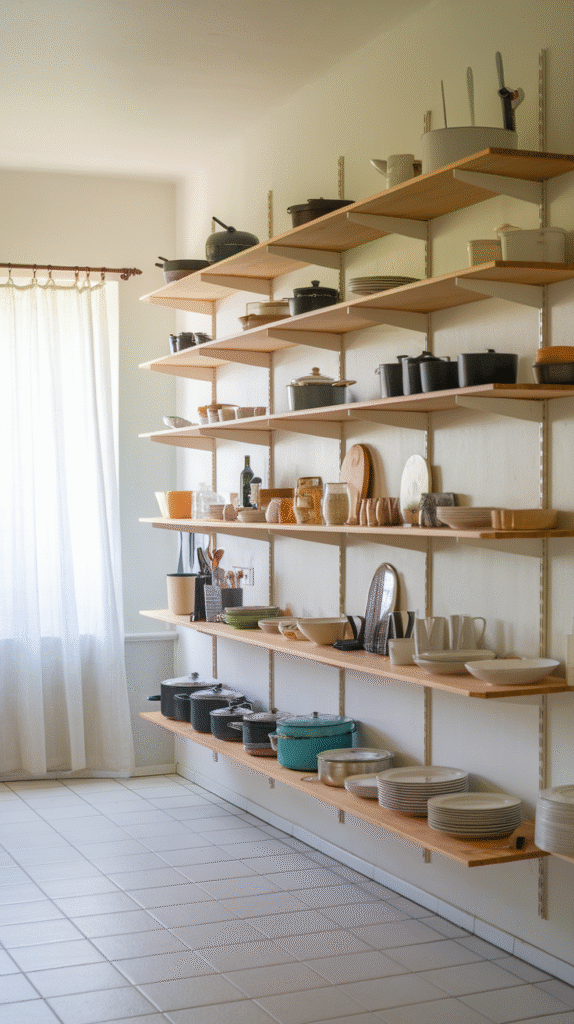
There are a few reasons why more homeowners and designers are leaning into open shelving:
- Visual openness: Without bulky cabinets, kitchens feel airier and brighter.
- Ease of access: You can grab what you need without opening a single door.
- Personality display: Shelves are perfect for showcasing favorite dishes, heirlooms, or quirky finds.
- Affordability: Most shelving systems are far less expensive than custom cabinetry.
Things to Consider Before Ditching Cabinets
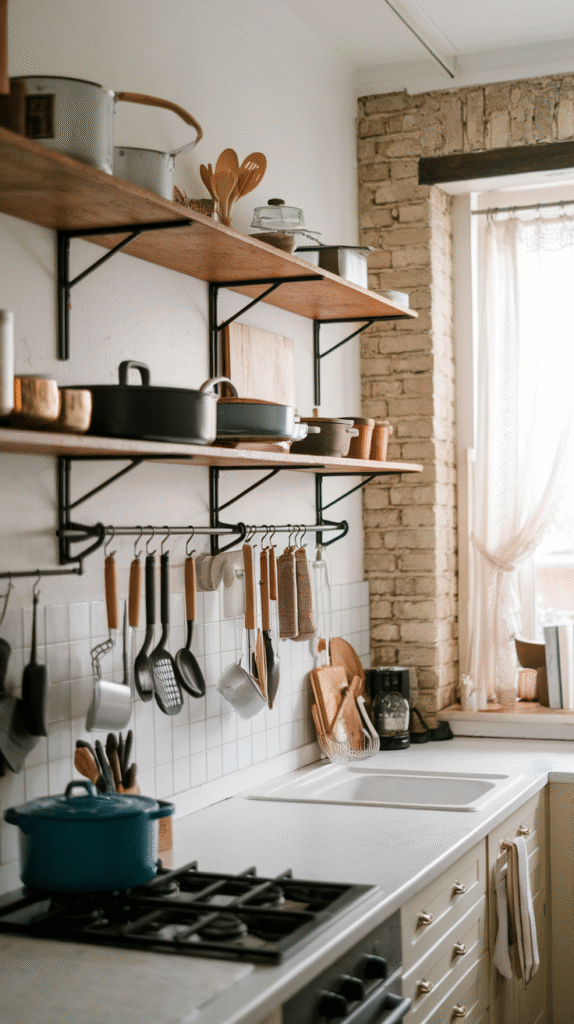
Before you fully commit to a no-cabinet life, keep these tips in mind:
- Dust and grease: Open shelves will gather dust and cooking residue. Choose washable materials and clean often.
- Clutter control: Everything is on display. Only keep what’s beautiful or useful — and ideally both.
- Weight limits: Not all shelves can bear the same load. Reinforce them if you plan to store heavy items like mixers or large pots.
- Consistent styling: Since your shelves are open to view, aim for a cohesive color scheme or material palette.
Conclusion
Choosing kitchen shelves instead of cabinets is like throwing off a heavy coat and dancing in the rain — liberating, stylish, and a little daring. It may not be for the faint of heart or the clutter-prone, but if done thoughtfully, it can completely transform the look and feel of your kitchen.
Start small, experiment with a couple of floating shelves, and see how it changes your space. You might be surprised how good it feels to live a little lighter — and how fun it is to design your kitchen around not just what you need, but what you love.

